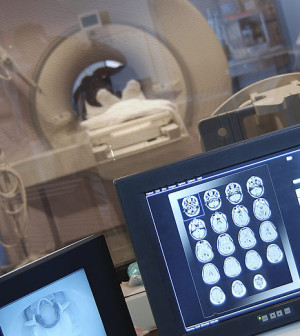- Navigating Your Midlife Crisis: Embracing New Possibilities
- City Raccoons Showing Signs of Domestication
- Mapping the Exposome: Science Broadens Focus to Environmental Disease Triggers
- One Week Less on Social Media Linked to Better Mental Health
- Your Brain Changes in Stages as You Age, Study Finds
- Some Suicide Victims Show No Typical Warning Signs, Study Finds
- ByHeart Formula Faces Lawsuits After Babies Sickened With Botulism
- Switch to Vegan Diet Could Cut Your Greenhouse Gas Emissions in Half
- Regular Bedtime Does Wonders for Blood Pressure
- Dining Alone Could Mean Worse Nutrition for Seniors
U.S. Making Headway Against Salmonella, E. coli: CDC


Contaminated food sickens millions of Americans each year, but the types of bacteria causing the majority of illnesses have changed in recent years, health officials said Thursday.
The incidence of reported infections with E. coli O157 and a common strain of Salmonella bacteria decreased by about one-third in 2014 compared to 2006-2008. But, while those infections decreased, infections with other types of Salmonella, Campylobacter and Vibrio were on the rise, according to experts from the U.S. Centers for Disease Control and Prevention.
In 2014, nine foodborne illnesses accounted for some 19,000 infections, about 4,400 hospitalizations, and 71 deaths, according to data from the CDC’s FoodNet tracking system.
However, the actual problem is much larger since FoodNet covers only 15 percent of the U.S. population, said Dr. Patricia Griffin, chief of the Enteric Diseases Epidemiology Branch in CDC’s Division of Foodborne, Waterborne and Environmental Diseases.
“We estimate that each year, one in six people in the United States gets sick from eating contaminated food,” she said. That represents 48 million Americans, of whom 128,000 are hospitalized and 3,000 die from foodborne diseases, according to the CDC.
The new report summarizes data from 2014, Griffin said. “The news is mixed. Some infections declined and others increased and most did not change,” she said. “Clearly, more work is needed.”
Salmonella caused the most infections (38 percent), followed by Campylobacter (33 percent) and E. coli (6 percent), Griffin said.
Overall, the number of Americans poisoned by these bacteria remained the same in 2014.
On the plus side, infections attributed to Shiga toxin-producing E. coli O157 fell 32 percent since 2006-2008, according to the report. Shiga-toxin can cause serious illness and kidney failure. These infections are linked to eating undercooked ground beef and raw leafy vegetables contaminated with the bacteria, researchers said.
The decline in these infections came after the U.S. Department of Agriculture made changes in its oversight of the beef industry, according to the report.
In addition, infections from Salmonella Typhimurium dropped 27 percent during the same period, continuing a trend that started in the mid-1980s. These infections have been linked to eating poultry, beef and other foods, CDC experts said.
Griffin credits these declines to a combined effort by government and industry to reduce contamination.
Despite this progress, infections from two less common types of Salmonella — Javiana and Infantis — more than doubled. The reasons for this increase are unclear, researchers said. According to the report, Salmonella Javiana is found mostly in the southeastern United States, but has been spreading to other areas of the country.
When all types of Salmonella are combined, no change was seen in 2014, according to the researchers. Campylobacter increased 13 percent and Vibrio increased 52 percent, compared with 2006-2008. Campylobacter infections have been linked to eating raw or undercooked poultry and meat, and unpasteurized dairy products, according to the CDC. Vibrio infections are often tied to eating undercooked shellfish, particularly oysters, according to U.S. government experts.
Despite a recent outbreak of listeria from contaminated ice cream, Griffin said that the number of listeria infections hasn’t changed. In 2014, listeria was responsible for 11 percent of foodborne illness outbreaks, according to the report.
“We haven’t seen a change in listeria infections since 2006-2008,” she said. “Over the long term, when FoodNet started 20 years ago, there’s been a remarkable decrease in listeria infections,” Griffin said.
The decrease in listeria is largely due to elimination of the bacteria in processed meats, she said.
The new report appeared in the May 15 issue of the CDC’s Morbidity and Mortality Weekly Report.
More information
For more information on avoiding illnesses from food, visit FoodSafety.Gov.
Source: HealthDay
Copyright © 2025 HealthDay. All rights reserved.










